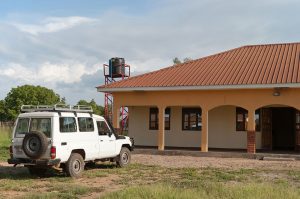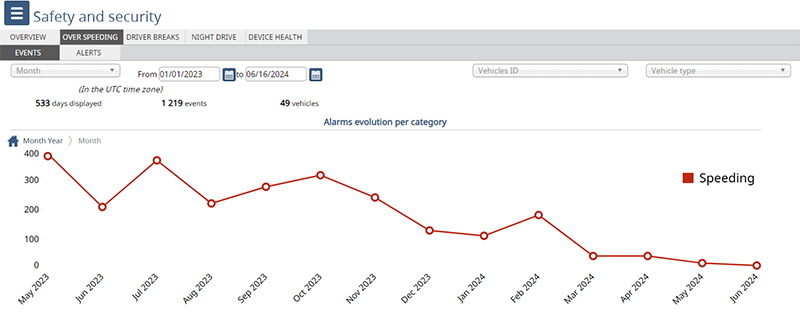Speeding in Humanitarian Vehicles: The Perils and Solutions
18 June 2024 - Humanitarian & Key accounts
18 June 2024 - Humanitarian & Key accounts
 According to the World Health Organization (WHO), road traffic injuries are the leading cause of death, with an estimated 1.35 million fatalities globally each year. This alarming statistic underscores the need for effective monitoring and control of vehicle speeds, particularly in humanitarian contexts where safety is paramount.
According to the World Health Organization (WHO), road traffic injuries are the leading cause of death, with an estimated 1.35 million fatalities globally each year. This alarming statistic underscores the need for effective monitoring and control of vehicle speeds, particularly in humanitarian contexts where safety is paramount.
High speeds increase the likelihood and severity of accidents, putting lives and missions at risk. Aware of this problem and the need of monitoring, CLS created HUMANAV, a web platform that tracks and manages humanitarian fleets, thereby enhancing the safety, security, and effectiveness of aid agencies everywhere.
Speeding in humanitarian vehicles is particularly dangerous for several reasons. Higher speeds reduce the driver’s reaction time and increase the stopping distance, making accidents more likely and more severe. Humanitarian missions often operate in areas with poor infrastructure and high pedestrian activity, where the consequences of high-speed accidents can be devastating.
Additionally, accidents involving humanitarian vehicles can delay critical missions, wasting valuable resources and potentially costing lives.
 HUMANAV offers a dedicated web platform to monitor and control vehicle speeds, ensuring the safety of both drivers and the communities they serve. The core of HUMANAV’s effectiveness lies in its Vehicle Tracking System (VTS) terminal, which is installed directly in the vehicle to continuously monitor speed. This system is designed to detect any speeding that is not included in the instructions given by fleet managers.
HUMANAV offers a dedicated web platform to monitor and control vehicle speeds, ensuring the safety of both drivers and the communities they serve. The core of HUMANAV’s effectiveness lies in its Vehicle Tracking System (VTS) terminal, which is installed directly in the vehicle to continuously monitor speed. This system is designed to detect any speeding that is not included in the instructions given by fleet managers.
Humanav is a powerful alerting system for speed monitoring. Upon detecting a speeding event, the HUMANAV system sends a specific message to a central platform. For instance, if the speed limit is set to 100 km/h and the vehicle exceeds this limit, an immediate alert is triggered. These alerts can be sent directly to the driver’s phone, providing real-time feedback and encouraging immediate corrective actions. Furthermore, the passenger can also be contacted once the alert is received, enabling immediate intervention and requests to reduce speed.
Humanav is a useful statistical tool to analyze driving behaviors and to help our customers correct their way of driving. The platform provides detailed data on speeding events, which is crucial for understanding patterns and implementing safety measures. Without HUMANAV, obtaining factual measurements of vehicle speeds is challenging. The solution offers precise data that forms the basis for effective safety interventions, ensuring that drivers are aware of their speed and promoting safer driving habits.

The detailed data collected by HUMANAV can be used to educate and train drivers on safe driving practices, fostering a culture of safety within humanitarian organizations. This data-driven approach to driver education ensures that interventions are based on factual evidence, leading to more effective and lasting improvements in driving behavior.
Speeding in humanitarian vehicles is a serious issue with far-reaching consequences. HUMANAV offers an effective and comprehensive approach to monitoring and controlling vehicle speeds, enhancing safety and operational efficiency in humanitarian missions. By providing real-time alerts and detailed data, HUMANAV not only helps in immediate speed regulation but also aids in long-term driver education and safety awareness.
Ultimately, HUMANAV contributes to safer roads and more successful humanitarian efforts, ensuring that aid reaches those in need without unnecessary delays or risks.